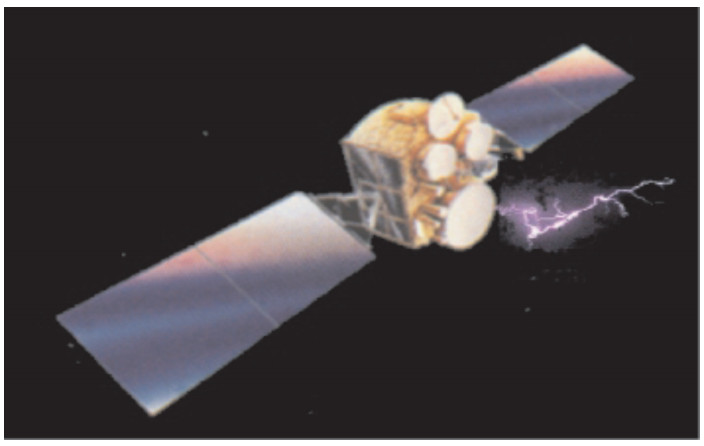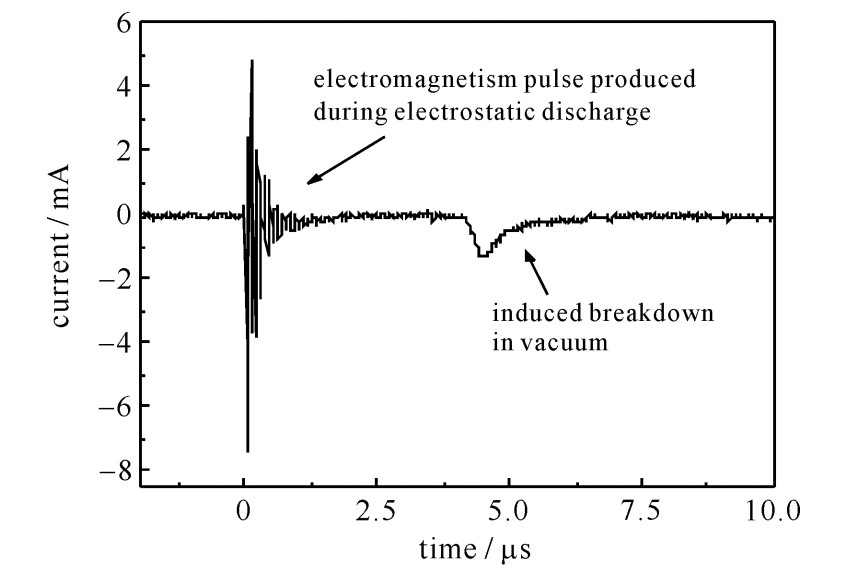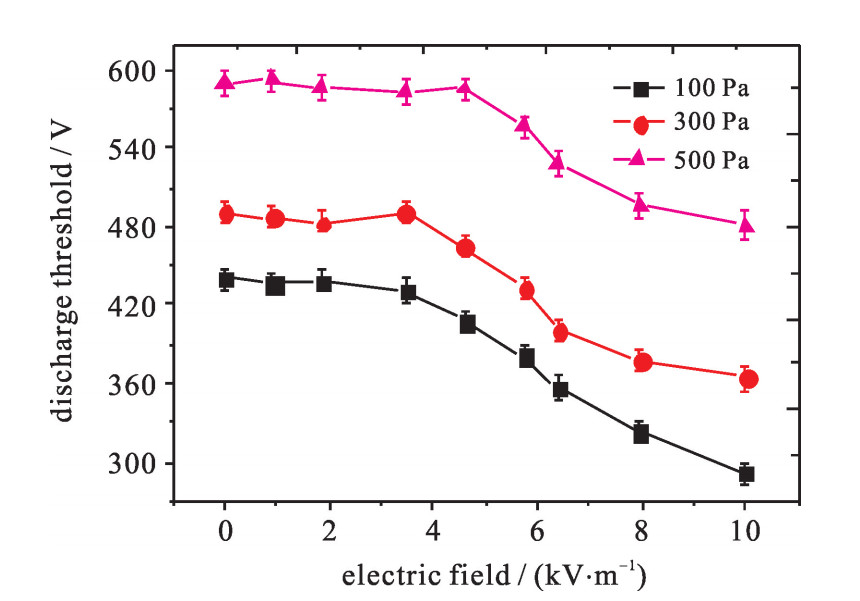Progress of the research of space electrostatic effect of spacecraft
-
摘要: 航天器在轨运行过程中面临的空间环境复杂多变,高能电子、等离子体环境、低气压、大温差等环境因素会引起航天器发生静电带电和放电效应,对航天器的安全运行造成严重影响。基于国内外试验数据和案例分析了空间环境引起的航天器故障,从数值仿真软件、地面模拟技术、强场诱发放电以及防护技术等方面介绍了空间环境作用下航天器充放电效应研究进展,对我国目前研究差距和未来研究方向进行了展望。研究表明:我国航天器充放电效应防护技术研究取得了进步,下一步重点针对空间站、深空探测、探月工程等新任务,进一步拓展空间环境作用下航天器充放电效应机理和防护新技术研究,为提升我国航天器的安全性和可靠性提供技术支撑。Abstract: The space environment in which the spacecraft located in orbit is complex and changeable. Environmental factors such as high-energy electrons, plasma environment, low pressure, large temperature difference and so on can cause electrostatic charge-discharge effects on the spacecrafts, which seriously affects the safety of the spacecraft. Based on the experimental data and cases at home and abroad, this paper analyzes the spacecraft faults caused by the space environment, introduces the research progress of the effect on spacecraft electrostatic charging-discharging in the space environment from the aspects of numerical simulation software, ground analogy technology, strong electromagnetic field induced discharging and protection technology. It finally presents prospects of the research gap and future research direction in China. The research indicates that progress has been made in the research of spacecraft charge-discharge effect protection technology in China. The next step is to focus on new tasks such as space station, deep space exploration and lunar exploration, and further expand the research on the mechanism of spacecraft charge-discharge effect and new protection technologies under space environment, so as to provide technical support for improving the safety and reliability of spacecraft in China.
-
表 1 静电放电使卫星发生故障统计表
Table 1. Statistics of satellite failures caused by ESD
number satellite designation organization fault conditions 1 IntelsatⅡ-F1 the United States random and true switching of electronic equipment 2 Intelsat Ⅱ-F2 the United States random and true switching of electronic equipment 3 Intelsat Ⅲ-F3 Intelsat random and true switching of electronic equipment 4 Intelsat Ⅲ-F4 Intelsat random and true switching of electronic equipment 5 Intelsat Ⅲ-F6 Intelsat random and true switching of electronic equipment 6 Intelsat Ⅲ-F7 Intelsat random and true switching of electronic equipment 7 Intelsat Ⅳ-F6 Intelsat random and true switching of electronic equipment 8 Intelsat Ⅳ-F7 Intelsat random and true switching of electronic equipment 9 Intelsat Ⅳ-F8 Intelsat random and true switching of electronic equipment 10 AnikA1 the United States random true switching of encoder 11 AnikA2 the United States random true switching of encoder 12 AnikA3 Canada random true switching of encoder 13 Sirius-1 Italy abnormal attitude sensor 14 AnikA3 Canada abnormal attitude sensor 15 Sirius-1 Italy abnormal attitude sensor 16 AnikB Canada attenuation of temperature control performance 17 European Navigation
Communications Satellit1ESA jamming electronic equipment 18 Symphony-Ⅱ France-Germany disturbance telemetry equipment 19 Symphony-Ⅱ France-Germany disturbance power regulating system 20 Lincoln Test Satellite the United States gyro drift 表 2 航天器表面带电研究历程
Table 2. Research courses of spacecraft surface charging
stage time main research contents and research situation 1 1924-1957 In the pre-space era, we mainly studied the simple theory of charged detection and the experiment of ionospheric plasma rocket detection. 2 1957-1961 This stage is the initial formation stage of the basic spacecraft charging theory. In 1957, the Soviet Union successfully launched Sputnik for the first time in human history, and the early research on charged flight experiment of spacecraft began. 3 1961-1965 In this stage, the spacecraft and rocket charged flight experiments were carried out, and the charged model of the spacecraft was established. The model included parameters such as secondary electron emission and photoelectron emission, and the basic framework and content of the charged theory of the spacecraft were established. In 1965, Professor E. C. Whipple of NASA published “Balance of Potential of Objects in the Upper Atmosphere”. 4 1965-1981 NASA DeForest’s report in 1972 mentioned the first in-situ observation of thousands of volts of electric potential on a spacecraft in re-geosynchronous orbit, which promoted the research of surface charged work of spacecraft. Many more perfect space plasma environment and models of surface charged spacecraft were studied. H. B. Garrett and E. C. Whipple et al. summarized the main theoretical results and observations of this stage. The engineering application of the above research results is shown in the compilation of NASA Spacecraft Live Design Guidelines (NASA2361) and MIL-STD-1541A. 5 1981-present With the construction of the International Space Station, the development of high-voltage solar array and tethered satellite technology, the charged effect of low Earth orbit plasma has become another research hotspot. More and more attention has been paid to many newly discovered problems in low earth orbit, such as ion forward effect and wake effect. 表 3 国外航天器表面带电地面模拟试验设备基本情况
Table 3. Base situation of overseas spacecraft surface charging simulation test equipments
equipment owner equipment construction time size basic technical indicators remarks NASA Lewis Research Center 1974 equipment dimensions: ϕ1.8 m×1.8 m specimen size: 30 cm×30 cm electronic energy: 30 keV beam current density: 0~5 nA/cm2 inhomogeneity: ≤30% The equipment has been used for testing many materials and components. MRC 1975 equipment dimensions: ϕ4 m×6 m electronic energy: 3~15 keV beam current density: 0~10 nA/cm2 The equipment mainly studied the sub-system and system- level charged effects, and had been used in the Skynet satellite identification model test. TRW Corporation 1978 equipment dimensions: ϕ0.61 m×1.2 m specimen size: ϕ200 mm electronic energy: 20 keV beam current density: 10~1000 nA/cm2 This equipment mainly studied the component-level charged effect and had been used in the solar array test of TDRSS satellite. DERTS 1976 equipment dimensions: ϕ0.6 m×0.8 m electronic energy: 4~25 keV beam current density: 10 nA/cm2 inhomogeneity: ≤20% — CNES 1978 equipment dimensions: ϕ7 m×8.9 m electronic energy: 30 keV beam current density: 1 nA/cm2 inhomogeneity: ≤30% The equipment mainly studied the sub-system and system-level charged effects, and had been used in the test of the European Meteorological Satellite Engineering Model. DFVLR 1976 equipment dimensions: ϕ2.5 m×5 m specimen size: 70 cm×70 cm electronic energy: 0~60 keV beam current density: 1~100 nA/cm2 inhomogeneity: ≤30% This equipment mainly studied the component-level charged effect and had been used in the solar array test of CTS satellite. Kyushu University of Technology, Japan — equipment dimensions: ϕ1 m×1.2 m electronic energy: 0~30 keV beam current density: 30 μA/cm2(2.5 kV) 3 mA/cm2(15 kV) — 表 4 国内航天器表面带电地面模拟试验设备基本情况
Table 4. Basic situation of domestic spacecraft surface charging simulation test equipments
equipment vacuum chamber size irradiation area electronic energy/keV beam current density/(nA·cm-2) inhomogeneity/ % test equipment ϕ450 of Institute 510 ϕ450 mm×120 mm ϕ350 mm 0~50 0~50 test equipment ϕ900 of Institute 510 ϕ900 mm×1600 mm 0.5~50 0.1~20 ≤30 test equipment ϕ800 of Institute 511 ϕ800 mm×1200 mm ϕ150 mm 5~50 0.1~20 ≤20 test equipment ϕ500 of Institute 511 ϕ500 mm×700 mm ϕ300 mm 5~30 1~100 ≤25 Equipment of Institute of Electronics, Chinese Academy of Sciences ϕ1m×1.2mm 1 m2 1~25 10~500 ≤30 -
[1] 空间科学和技术综合专题组. 2020年中国空间科学和技术发展研究[C]//2020年中国科学和技术发展研究暨科学家讨论会论文集. 2004: 384-432.Comprehensive Thematic Group on Space Science and Technology. China's research on space science and technology development in 2020//China's Symposium on Science and Technology Development and Scientists in 2020. 2004: 384-432 [2] 许滨, 武占成, 郝永锋, 等. 航天器在轨空间环境研究[J]. 河北科技大学学报, 2011, 32(s2): 9-14. https://www.cnki.com.cn/Article/CJFDTOTAL-HBQJ2011S2003.htmXu Bin, Wu Zhancheng, Hao Yongfeng, et al. Spacecraft on-orbit space environment research. Journal of Hebei University of Science and Technology, 2011, 32(s2): 9-14 https://www.cnki.com.cn/Article/CJFDTOTAL-HBQJ2011S2003.htm [3] 薛梅. 高压砷化镓太阳阵ESD效应及防护技术研究[D]. 天津: 天津大学, 2007.Xue Mei. Study on ESD effect and protection technology of high-voltage gallium arsenide solar array. Tianjin: Tianjin University, 2007 [4] 赵雪, 蔡震波. 空间环境及效应对在轨航天器的影响分析[C]//第六届空间物理专业委员会全体会议暨空间环境研究预报专题研讨会. 2004.Zhao Xue, Cai Zhenbo. The impact of space environment and effectiveness on on-orbit spacecraft//Sixth Plenary Session of the Special Committee on Space Physics and Symposium on Space Environment Research and Forecast. 2004 [5] 刘尚合, 魏光辉, 刘直承, 等. 静电理论与防护[M]. 北京: 兵器工业出版社, 1999.Liu Shanghe, Wei Guanghui, Liu Zhicheng, et al. Electrostatic theory and protection. Beijing: Weapons Industry Press, 1999 [6] 杜春普. 静电危害与防护[J]. 惯导与仪表, 2001(2): 38-48. https://www.cnki.com.cn/Article/CJFDTOTAL-JSCX201103017.htmDu Chunpu. Electrostatic hazards and protection. Inertial Navigation and Instrumentation, 2001(2): 38-48 https://www.cnki.com.cn/Article/CJFDTOTAL-JSCX201103017.htm [7] 庞永江, 徐跃民. 地面实验室模拟空间等离子体环境的初步测试[J]. 空间科学学报, 2001, 21(3): 259-265. https://www.cnki.com.cn/Article/CJFDTOTAL-KJKB200103008.htmPang Yongjiang, Xu Yuemin. Preliminary test of simulated space plasma environment in ground laboratory. Journal of Space Science, 2001, 21(3): 259-265 https://www.cnki.com.cn/Article/CJFDTOTAL-KJKB200103008.htm [8] 黄本诚, 童靖宇. 空间环境工程学[M]. 北京: 中国科学技术出版社, 2010.Huang Bencheng, Tong Jingyu. Space environmental engineering. Beijing: China Science and Technology Press, 2010 [9] 庞永江. 地面实验室模拟空间等离子体环境及太阳能电池片效应初步实验研究[D]. 北京: 中国科学院空间科学与应用研究中心, 2001.Pang Yongjiang. Preliminary experimental study on simulated space plasma environment and solar cell effect in ground laboratory. Beijing: Center for Space Science and Application, Chinese Academy of Sciences, 2001 [10] Finckenor M M, Kamenetzky R R, Vaughn J A, et al. Space environmental effects testing in support of the international space station[C]//38th AIAA Aerospace Sciences Meeting and Exhibit. 2001. [11] Wilkes D R, Zwiener J M. Science data report for the Optical Properties Monitor (OPM) experiment[R]. NASA CR-2001-210881. [12] Prebola J L, Bertrand W T, Crider D H, et al. Development of a combined space environment test facility at AEDC[R]. Aerospace Testing, 2006. [13] 师立勤. 低轨道航空器辐射环境和表面充电效应研究[D]. 北京: 中国科学技术大学, 2011.Shi Liqin. Study on the radiation environment and surface charging effect of low orbit aircraft. Beijing: China University of Science and Technology, 2011 [14] Okumura T, Mashidori H, Takahashi M, et al. Temperature effect on primary discharge under simulated space plasma environment[J]. IEEE Trans Plasma Science, 2012, 40(2): 345-350. doi: 10.1109/TPS.2011.2173214 [15] Katz I, Cassidy J J, Mandell M J, et al. The capabilities of the NASA charging analyzer program[J]. Spacecraft Charging Technol, 1978, 10: 101-122. [16] Mandell M J, Davis V A, Cooke D L, et al. Nascap-2K spacecraft charging code overview[J]. IEEE Trans Plasma Science, 2006, 34(5): 2084-2093. doi: 10.1109/TPS.2006.881934 [17] Roussel J F, Rogier F, Dufour G, et al. SPIS open-source code: Methods, capabilities, achievements, and prospects[J]. IEEE Trans Plasma Science, 2008, 36(5): 2360-2368. doi: 10.1109/TPS.2008.2002327 [18] Muranaka T, Hosoda S, Kim J H, et al. Development of multi-utility spacecraft charging analysis tool[J]. IEEE Trans Plasma Science, 2008, 36(5): 2336-2349. doi: 10.1109/TPS.2008.2003974 [19] Roeder J L, Fennell J F. Differential charging of satellite surface materials[J]. IEEE Trans Plasma Science, 2009, 37(1): 281-289. doi: 10.1109/TPS.2008.2004765 [20] 吴中华, 古士芬, 臧振群, 等. 航天器表面充电效应及其工程计算[J]. 环模技术, 1999(2): 9-13. https://www.cnki.com.cn/Article/CJFDTOTAL-HTHJ199902001.htmWu Zhonghua, Gu Shifen, Zang Zhenqun, et al. Surface charging effect of spacecraft and its engineering calculation. Ring-Mode Technology, 1999(2): 9-13 https://www.cnki.com.cn/Article/CJFDTOTAL-HTHJ199902001.htm [21] 李丹明, 陈学康. 空间环境效应与防护技术研究现状与发展设想[J]. 航天器环境工程, 2008, 25(3): 224-228. https://www.cnki.com.cn/Article/CJFDTOTAL-HTHJ200803013.htmLi Danming, Chen Xuekang. Research status and development assumption of space environmental effects and protection technology. Spacecraft Environmental Engineering, 2008, 25(3): 224-228 https://www.cnki.com.cn/Article/CJFDTOTAL-HTHJ200803013.htm [22] 闫德奎. 大幅照面电子枪模拟空间地磁亚暴环境的方法研究[D]. 武汉: 武汉大学, 2005.Yan Dekui. Method of simulating space geomagnetic sub-storm environment with large-scale illumination electron gun. Wuhan: Wuhan University, 2005 [23] NASA. Avoiding problems caused by spacecraft on-orbit interal charging effects[R]. NASA-Hdbk-4002, 1999. [24] 原青云, 孙永卫, 张希军, 等. 航天器带电理论及防护[M]. 北京: 国防工业出版社, 2016.Yuan Qingyun, Sun Yongwei, Zhang Xijun, et al. Spacecraft charging theory and protection. Beijing: National Defense Industry Press, 2016 [25] 王立, 秦晓刚. 空间材料二次电子发射特性测试[J]. 真空与低温, 2002, 8(1): 18-21. https://www.cnki.com.cn/Article/CJFDTOTAL-ZKDW200201003.htmWang Li, Qin Xiaogang. Measurement of secondary electron emission characteristics of space materials. Vacuum and Low Temperature, 2002, 8(1): 18-21 https://www.cnki.com.cn/Article/CJFDTOTAL-ZKDW200201003.htm [26] Kiefer R L, Orwoll R A. Shielding materials for highly penetrating space radiations[R]. NASA-CR-199720. [27] Hoang B, Wong F K, Corey R L, et al. Combined space environmental exposure test of multijunction GaAs/Ge solar array coupons[J]. IEEE Trans Plasma Science, 2012, 40(2): 324-333. [28] Purvis C K, Garrett A H B, Whittlesey C. Design guidelines for assessing and controlling spacecraft charging effects[R]. NASA TP-2361. [29] Boscher D, Bourdarie S, et al. A new model for electrons fluxes in GEO[C]//54th International Astronautical Congress of the International Astronautical Federation. 2003. [30] Fukushige S, Akahoshi Y, Watanabe K, et al. Solar-array arcing due to plasma created by space-debris impact[J]. IEEE Trans Plasma Science, 2008, 36(5): 2434-2439. [31] Katz I, Davis V A, Snyder D B, et al. Mechanism for spacecraft charging initiated destruction of solar arrays in GEO[R]. AIAA Paper, 1998. [32] Rodgers D. Spacecraft plasma interaction guidelines and handbook[R]. European Space Agency, 2004. [33] Olsen R C. Record charging events from Applied Technology Satellite 6[J]. Journal of Spacecraft and Rockets, 1987, 24(4): 362-366. -





 下载:
下载:



